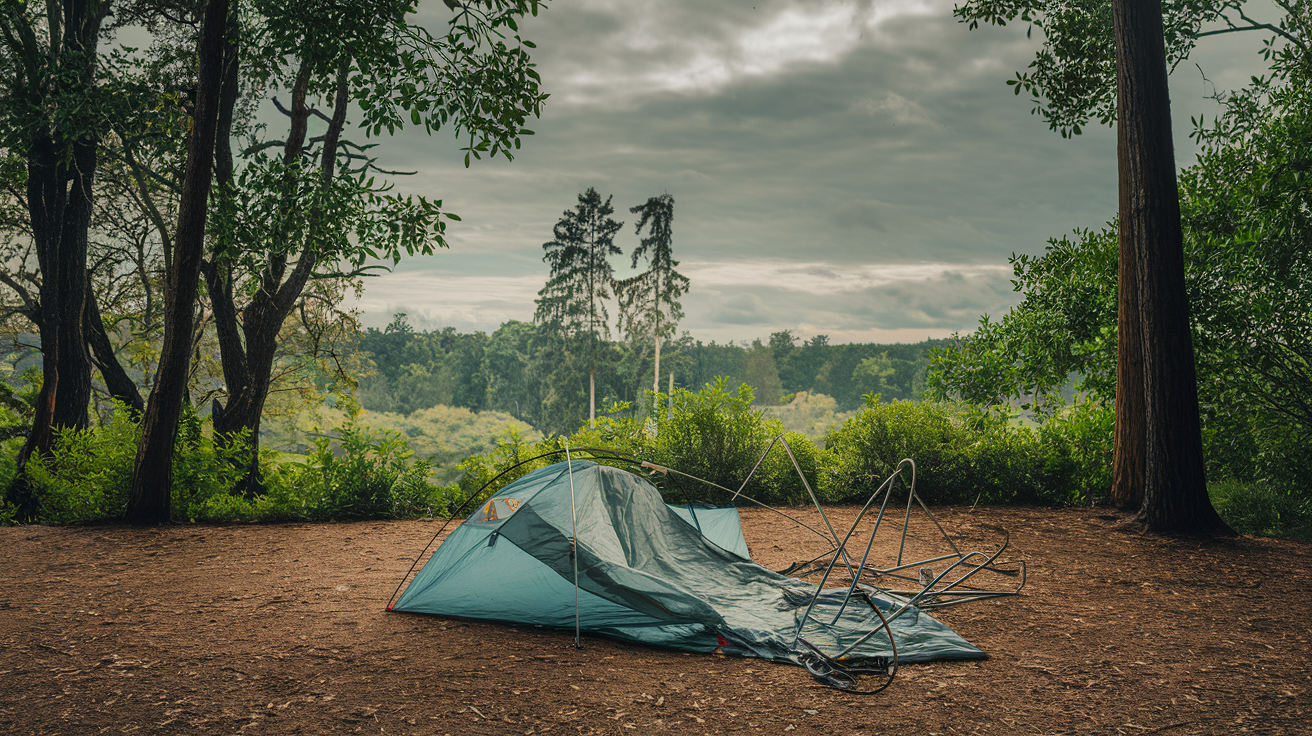Physical Address
304 North Cardinal St.
Dorchester Center, MA 02124
Physical Address
304 North Cardinal St.
Dorchester Center, MA 02124

Setting up a tent may seem simple, but common mistakes can lead to discomfort, leaks, and instability. Whether you’re a seasoned camper or a beginner, avoiding these errors can make a huge difference in comfort, durability, and weather resistance.
In this guide, we’ll cover the most common tent setup mistakes, how they can impact your camping experience, and expert tips to avoid them. If you’re looking for top-rated tents, check out our Best Camping Tents of 2025 for expert recommendations.
Setting up a tent in a bad location can lead to water pooling, strong winds, or an uncomfortable night’s sleep.
🔹 Best for stability: A flat, dry, and wind-sheltered campsite ensures a safe and comfortable experience.
👉 Recommended Tent: Big Agnes Copper Spur HV UL2 – Lightweight, durable, and well-ventilated for all camping conditions.
Many campers skip using a footprint, which can lead to moisture seepage, tears, and discomfort.
🔹 Best for tent longevity: A properly sized footprint prevents moisture and wear.
👉 Recommended Footprint: ALPS Mountaineering Tent Floor Saver – Waterproof, lightweight, and perfect for protecting your tent’s base.
Improper staking can cause tent instability, collapse, or wind damage.
🔹 Best for windy conditions: Reinforced guylines and deep-staked corners improve tent stability.
👉 Recommended Stakes: MSR Groundhog Tent Stakes – Ultralight, durable, and provide excellent grip in various ground conditions.
A too-tight tent can strain the fabric, while a loose tent sags and collects water.
🔹 Best for waterproofing: A balanced, well-tensioned setup keeps rain and wind at bay.
A sealed-up tent can trap moisture, leading to condensation buildup inside.
🔹 Best for comfort: Proper ventilation keeps the tent dry and reduces condensation.
👉 Recommended Tent Fan: Camping Fan with LED Light – Dual-purpose fan and light to improve ventilation and comfort inside your tent.
Many campers wait until they reach the campsite to set up a tent for the first time.
🔹 Best for beginners: A trial setup at home ensures a stress-free camping experience.
Many tents are water-resistant but not fully waterproof unless treated properly.
🔹 Best for wet conditions: Waterproofing ahead of time prevents surprise leaks.
👉 Recommended Waterproofing Spray: Nikwax Tent & Gear SolarProof – Protects against rain and UV damage to extend tent life.
Setting up a tent without enough light or during a storm can lead to rushed mistakes.
🔹 Best for safety: A well-lit setup ensures a secure and stable tent.
👉 Recommended Headlamp: Black Diamond Spot 400 – Bright, waterproof, and reliable for nighttime setup.
| Mistake | How to Avoid It |
|---|---|
| Choosing the wrong campsite | Find level, dry ground away from hazards. |
| Skipping a ground tarp | Use a footprint to protect the tent floor. |
| Not staking properly | Use deep, angled stakes and guylines. |
| Poor tensioning | Tighten guylines evenly for stability. |
| Ignoring ventilation | Open vents/windows to reduce condensation. |
| Not testing the tent | Set it up at home before the trip. |
| Overlooking waterproofing | Seal seams and secure the rainfly properly. |
| Setting up in bad conditions | Arrive early or use a headlamp for lighting. |
What is the most common mistake when setting up a tent?
Should I use a tarp under my tent?
How can I prevent condensation inside my tent?
How do I make my tent more waterproof?
Avoiding tent setup mistakes ensures a dry, comfortable, and stress-free camping experience.
Looking for top-rated tents and accessories? Check out our Best Camping Tents of 2025 for expert recommendations!